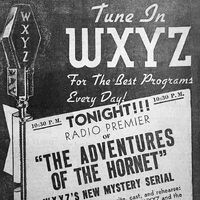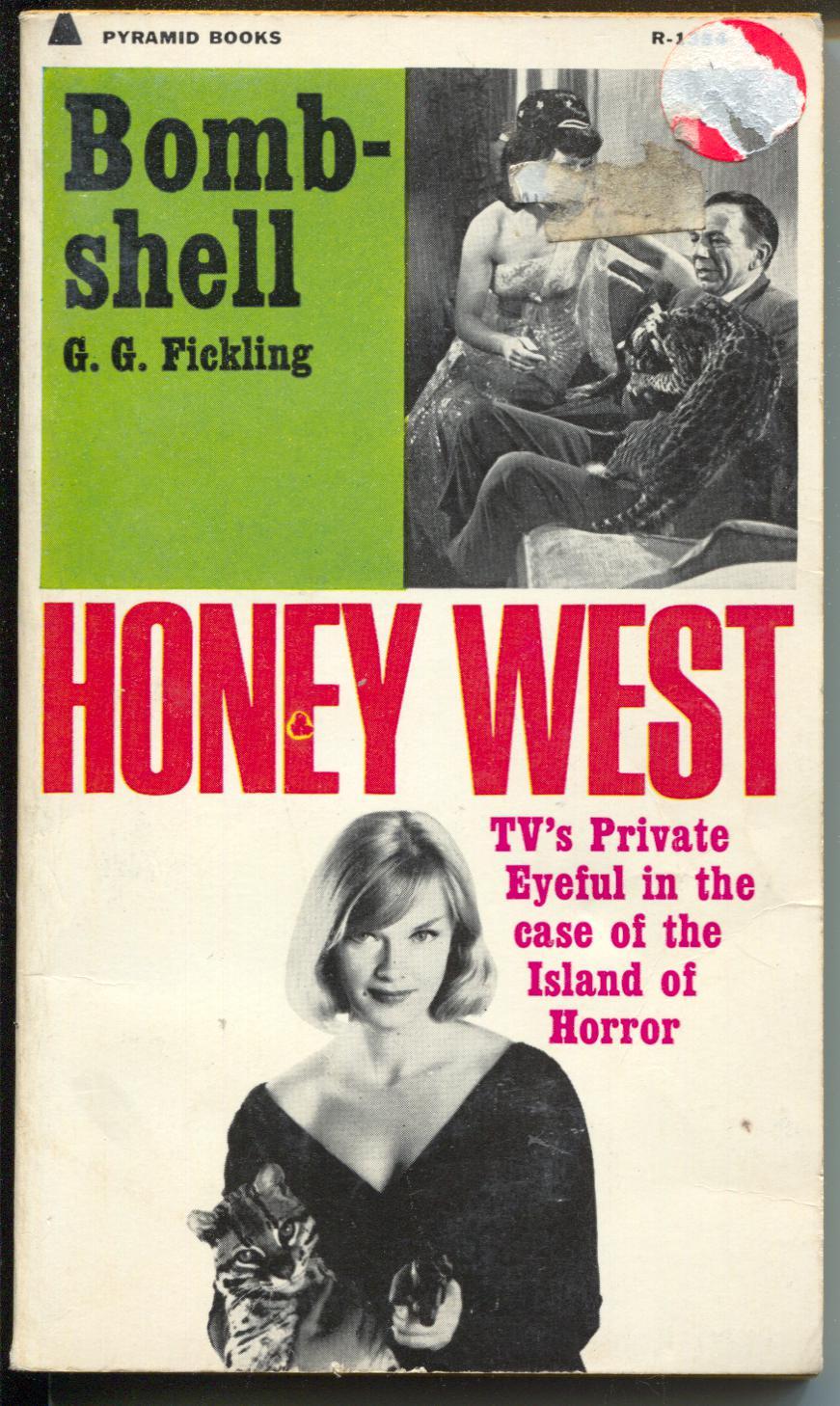On
the side in a white box you will see a list of possible origins. Don't
assume there is one-for-one match (one character from radio, one from
opera, etc.)
Answers at the bottom of the page. Good luck!
Charlie Chan
Jiminy Cricket
Robinson Crusoe
Green Hornet
Detective John Munch
Horace Rumpole
Karen Sisco
Staggerlee
Honey West
Ready? Okay, here are the answers:
Paul Bunyan. Folklore. Sure,
the giant logger started in oral legends, but as is usually the case
with folklore, it's complicated. The earliest known written appearance
is a one-line reference in a newspaper in 1893, a joke that would make
no sense to anyone unfamiliar with "Paul Bunion."
He was apparently only about eight feet tall until 1916 when William B. Laughead used him in an advertising pamphlet. That's when he grew into a man who could lift mountains and make lakes with his footprints.
Because
so many of the familiar stories show up late some scholars call it
"fakelore," but James Stevens, who wrote a book about our big boy in
1925 argued that making up new tales based on the basic framework is
exactly how the stories worked in the lumber camps.
Charlie Chan. Real Life. Sort of. Yes, Charlie Chan made his first appearance in Earl Derr Biggers' mystery novel The House Without A Key
(1925), but he acknowledged that the character was inspired by Chang
Apana, a famous member of the Honolulu police force. Unlike his
fictional counterpart, Apana was not permitted to work on cases
involving White people. Biggers and Apana met in 1928, by the way.
Chan
is considered an offensive stereotype today - less for the novels than
for the countless movies starring White men in the part - so it is easy
to forget that Biggers was trying to combat the "sinister Oriental"
cliche represented by Fu Manchu, by creating a decent and brilliant
Chinese policeman.
Jiminy Cricket. Movie. The living puppet began in The Adventures of Pinocchio, an Italian children's book by Carlo Collodi, published in 1883. In that book the Fairy with Turquoise Hair gave him a talking cricket as a conscience, which the little wooden brat promptly murdered. So the animal appeared as a ghost throughout the rest of the book.
In a most un-Disneylike twist, Ukulele Ike had also recorded some hokum - which is to say double entendre songs that were only sold to adults "under the counter."
Robinson Crusoe. Novel.
Daniel Defoe's immortal novel about a desert island castaway is often
linked to the ordeal of Alexander Selkirk, who spent four years on an
island off the coast of Chile after being dumped there by his captain.
But Andrew Lambert, in his book Crusoe's Island,
argues that the book is a mash-up of the adventures of several
maroonees, if that's a word. Defoe never confirmed or denied Selkirk's
influence.
I
included him here largely because many years ago the NPR quiz show Says
You did a round of questions about comic strips, and somehow included
one about the olive wasp: "What was the name of the Green Hornet's
grand-uncle's horse?"
I
knew the answer. But I was irritated because GH didn't start in a
strip or even a comic book, and you think a radio show would know he
came from radio show. (And by the way, that is a clue to the answer to that
question.)
Detective John Munch. Real Life. Detective (later Sergeant) John Munch entered the world through the wonderful TV series Homicide: Life on the Street, played by Richard Belzer. When that show ended Munch left Baltimore Homicide and moved to NYPD for Law and Order: Special Victims Unit. Believe it or not the cynical conspiracy-minded cop also made guest appearnces on The X Files, Arrested Development, The Wire, 30 Rock, and a handful of other TV series.
So why do I say he started in real life? The TV series Homicide was based on David Simon' award-winning nonfiction book Homicide: A Year on the Killing Streets. Munch is clearly (and admittedly) inspired by Detective Sergeant Jay Landsman.
Horace Rumpole. Television. The defender of the British criminal classes began in TV, although he was later seen in novels, short stories, and radio. John Mortimer, himself a barrister, claimed he created Rumpole specifically to fund his retirement.
Here is how that book begins:
Pulling
one hand from the warmth of a pocket, Jay Landsman squats down to grab
the dead man's chin, pushing the head to one side until the wound
becomes visible as a small, ovate hole, oozing red and white.
"Here's your problem," he said. "He's got a slow leak."
"A leak?" says Pellegrini, picking up on it.
"A slow one."
"You can fix those."
"Sure you can," Landsman agrees. "They got these home repair kits now..."
Inevitably Jay Landsman did some acting, in The Corner and The Wire.
Horace Rumpole. Television. The defender of the British criminal classes began in TV, although he was later seen in novels, short stories, and radio. John Mortimer, himself a barrister, claimed he created Rumpole specifically to fund his retirement.
In 1968
Mortimer wrote a TV movie called "Infidelity Took Place," about a
barrister who is a sort of ur-Rumpole. A few years later he wrote a
play about Horace Rumbold, but the name was changed because there really
was a lawyer by that name. (Of course, the name is a pun. Think of a
Cockney saying Rump 'Ole.)
While
Rumpole was conceived as a small-timer who lost most of his cases, as
the show went through seven seasons he became more and more successful.
And as Mortimer looked farther afield for interesting plots, Rumpole
found himself working in a military court, an African court (with the
death penalty on the table), an ecclesiastical court (bizarre for an
atheist), and, hardest to believe, conducting a prosecution (inevitably
he proved the defendant innocent).
Karen Sisco. Short Story. Elmore
Leonard would sometimes try out a character in a story before trusting
her with a whole novel. Deputy Marshal Sisco began life in a 1996 tale,
"Karen Makes Out."
She then starred in the novel Out of Sight, made into a movie in which she was played by Jennifer Lopez. That led to the short lived TV series Karen Sisco, starring Carla Gugino. And that was the end of the character. Or was it?
In the second season of the TV show Justified,
a much more successful adaptation of Leonard's work, Carla Gugino
reappears as the Assistant Director of the Marshal Service, Karen
Goodall. It is mentioned that she had married and divorced. Was Sisco
her maiden name?
Staggerlee. Real life. Alias Stackolee, Stagger
Lee, Stagolee, etc. The song (and its infinite variants) is based on
the murder of Billy Lyons, which took place in St. Louis, Missouri in
1895. Curiously, I have never heard a version that mentioned that the killing
happened on Christmas, making this one of the least likely holiday
carols since "Grandma Got Run Over By A Reindeer." The murderer was Lee
Shelton and there are many explanations for his nickname.
Lyons
and Shelton were both criminals, possibly business rivals. Billy Lyons
stole Shelton's stetson hat, Shelton got his gun, and the rest was musical
history. Most versions of the song I am familiar with show our hero
being executed and end with him telling the Devil "I'll rule Hell by
myself." He was a bad man, that Staggerlee. But in reality, Shelton
spent twelve years in prison, got paroled, and returned to stir one year
later, and died there.
Honey West. Novel. One
of the first female private eyes, she appeared in 11 novels written by
G.G. Fickling (actually Forrest E. Fickling and his wife Gloria. She
debuted in This Girl For Hire in 1957.
In 1965 Anne Francis guest-starred as Ms. West in an episode of Burke's Law, and that led to a TV series of her own, which lasted for 30 episodes.




:format(jpeg):mode_rgb():quality(90)/discogs-images/R-8734728-1573638469-6926.jpeg.jpg)




That was interesting. Learned something new first thing in the morning. Good post.
ReplyDeleteInteresting! I missed most of these, but was very pleased by the ones I got.
ReplyDeleteThe first appearance of the short story "Karen Makes Out," which introduces Karen Sisco, was in an anthology called Murder for Love, edited by Otto Penzler, and the first time I saw the story was in a Leonard collection called When the Women Come Out to Dance.
Great post, Rob.
When the Women Came Out to Dance is an amazing collection. He uses a story structure in one that I am dying to steal.
ReplyDeleteI didn't know about Munch, Sisco, and Staggerlee, but I knew the rest of them.
ReplyDeleteDisney really had to cut the heck out of "The Adventures of Pinocchio."
And I love Rumpole of the Bailey. I suspect that Charles Laughton's Sir Wilfrid in "Witness for the Prosecution" infiltrated some of Mortimer's brain when he created Rumpole.
I'd never heard hokum defined that way before!
ReplyDeleteI bought the Rumpole collection, written and on video. I knew part of Horace's background, but not all. Regarding our man appearing for the prosecution…
Our justice system is characterized with distinct lines between prosecution and defence firms and lawyers, and generally prosecutors are employed directly by the state, In the UK, barristers can defend one case and prosecute another depending how briefs are handed out. Moreover, barristers in the same chambres (firms) can find themselves on opposite sides. In cases with potential conflicts of interest, the parties establish a 'Chinese wall' to ensure leaks between opponents don't take place.
Stagger Lee has a dismaying number of variant spellings, including Stack-a Lee, Stack-o Lee, Stagga Lee, ad infinitum, more than poke salat. When I lived in NYC, my girlfriend's high school reunion committee were debating live music. They reminisced about Lloyd Price and someone got the idea of checking the phone directory (believe it or not, people's home phones were listed in huge paperback books then) and found him living a quite life in Brooklyn. They game him a call and he came out of forced retirement to play at their reunion.
As for how many origins I got right, uh, (cough, cough)… er…
Anyone looking for a listing of all the Honey West books (i.e., me), here's a link to a list:
ReplyDeletehttp://www.stopyourekillingme.com/F_Authors/Fickling_G-G.html